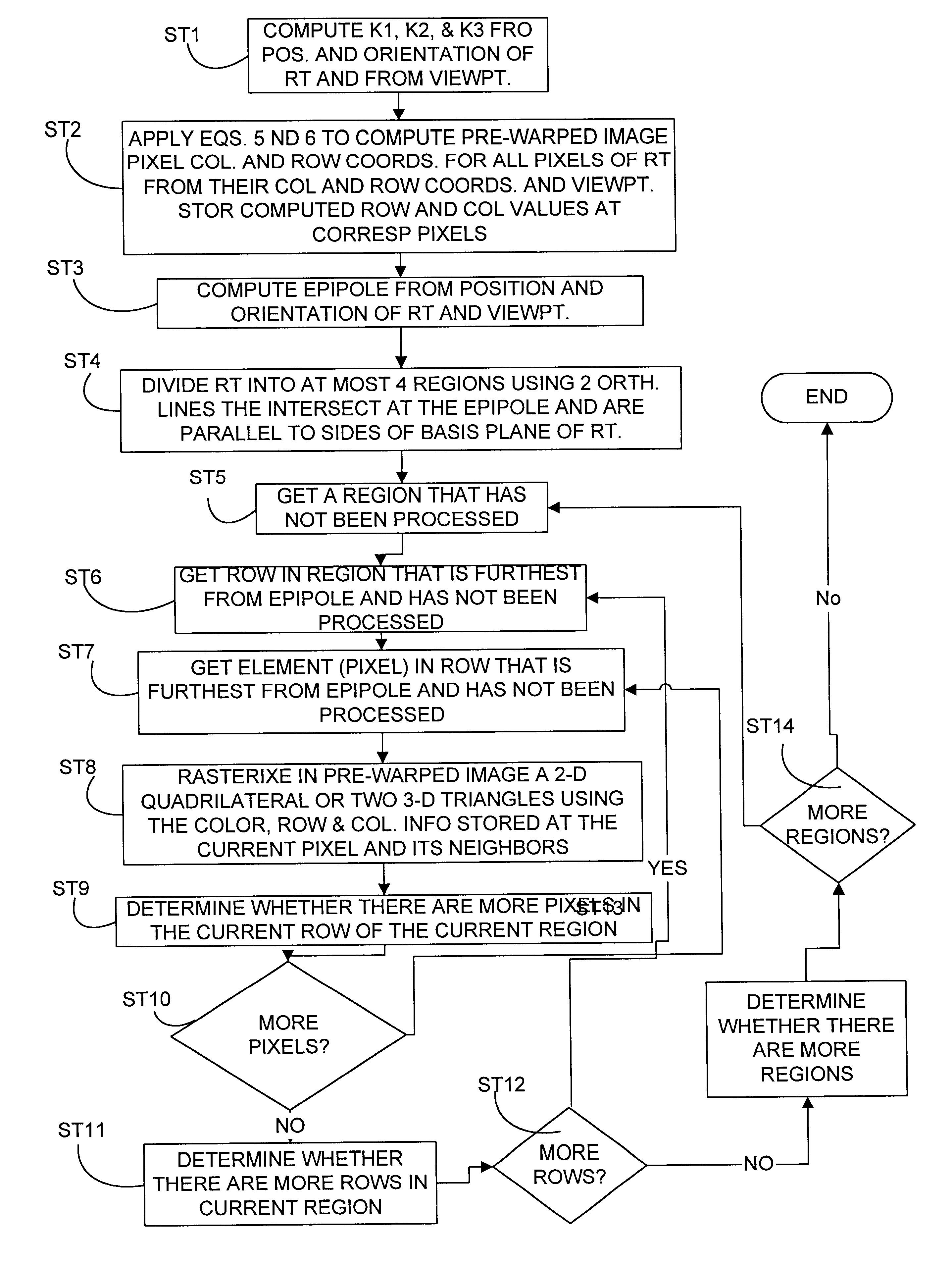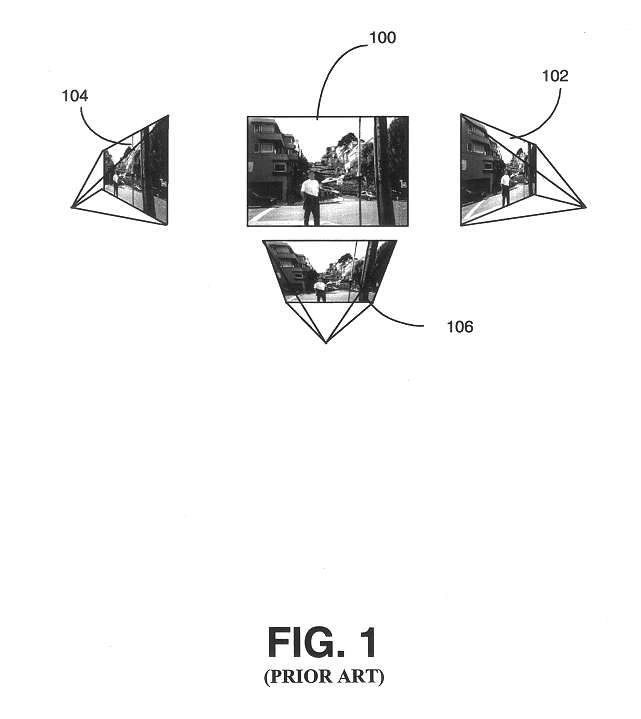Methods and systems for producing three-dimensional images using relief textures
a technology of relief texture and three-dimensional image, applied in the direction of filling the planer surface with attributes, instruments, computing, etc., can solve the problems of unreachable one-to-one relationship between pixels in original and projected images, flat image creation using conventional methods, and flat reproduction of scenes
- Summary
- Abstract
- Description
- Claims
- Application Information
AI Technical Summary
Benefits of technology
Problems solved by technology
Method used
Image
Examples
Embodiment Construction
The present invention includes methods and systems for generating three-dimensional images using relief textures. The methods and systems according to the present invention may be implemented in hardware, software, or a combination of hardware and software. FIG. 5 illustrates exemplary steps that may be performed in generating a three-dimensional image according to the present invention. In step ST1, the scene is modeled using one or more relief textures. Once the scene has been modeled, each relief texture is pre-warped to its own basis according to the desired viewpoint. (step ST2) After the images have been pre-warped to basis planes of the relief textures, the pre-warped images are texture mapped onto the associated polygons used to model the scene based on the desired viewpoint. (step ST3) Each of these steps will now be described in more detail.
FIG. 6 illustrates an exemplary scene modeling routine that may be utilized to model a scene according to the present invention. In st...
PUM
 Login to View More
Login to View More Abstract
Description
Claims
Application Information
 Login to View More
Login to View More - R&D
- Intellectual Property
- Life Sciences
- Materials
- Tech Scout
- Unparalleled Data Quality
- Higher Quality Content
- 60% Fewer Hallucinations
Browse by: Latest US Patents, China's latest patents, Technical Efficacy Thesaurus, Application Domain, Technology Topic, Popular Technical Reports.
© 2025 PatSnap. All rights reserved.Legal|Privacy policy|Modern Slavery Act Transparency Statement|Sitemap|About US| Contact US: help@patsnap.com



